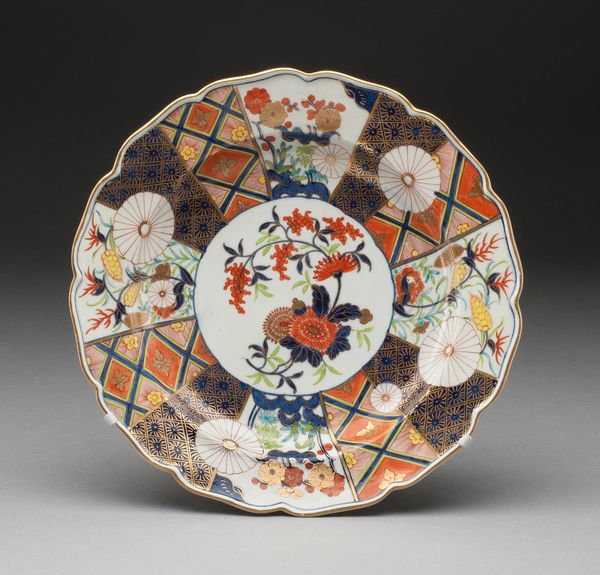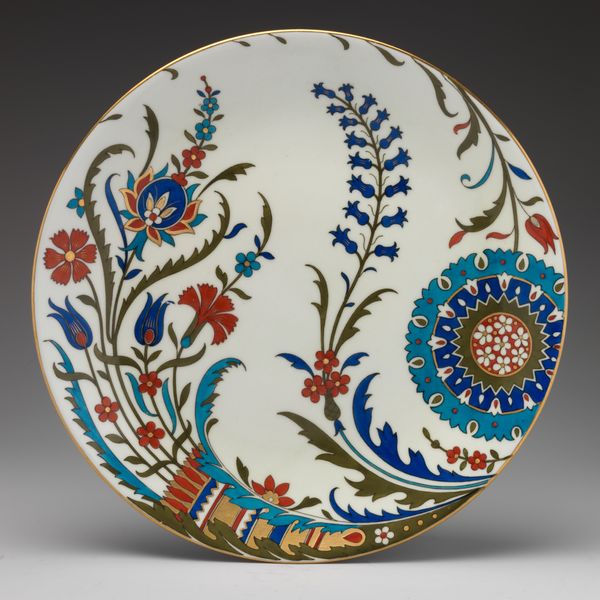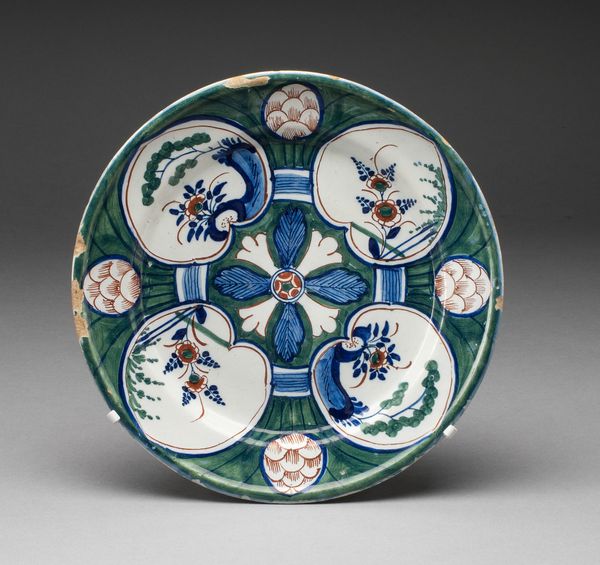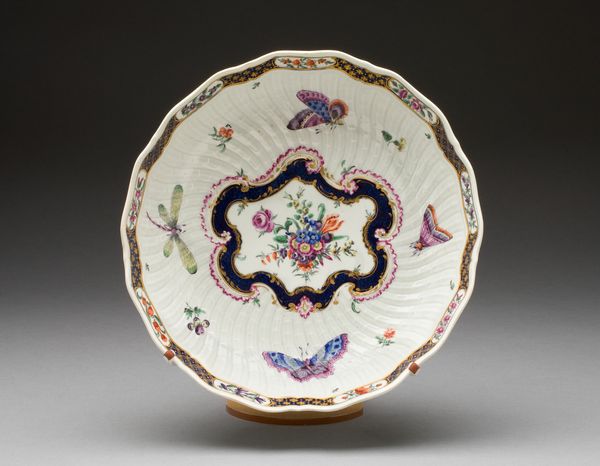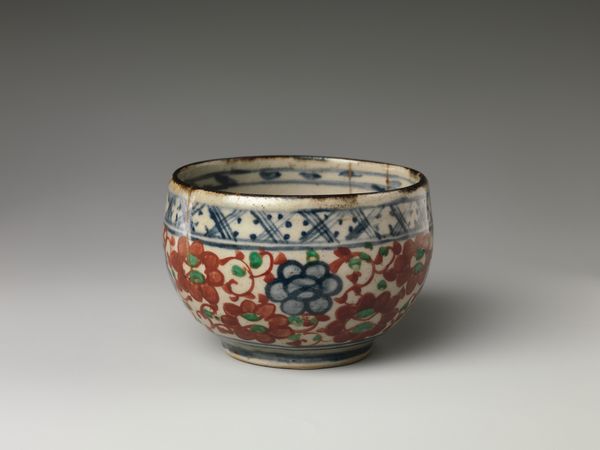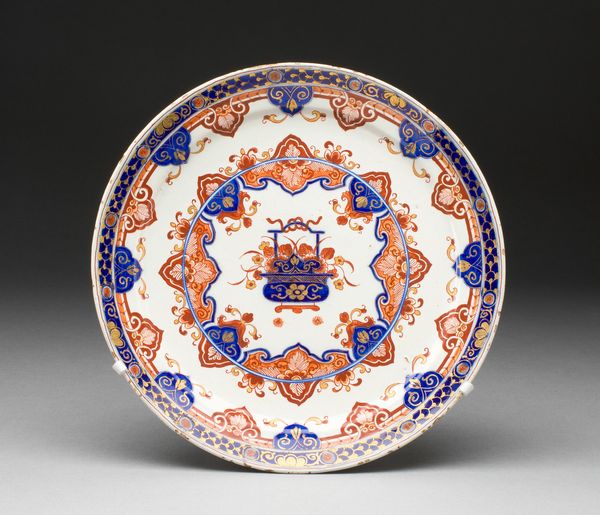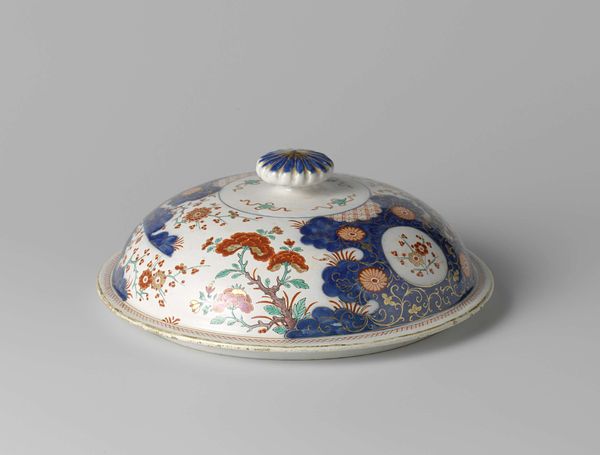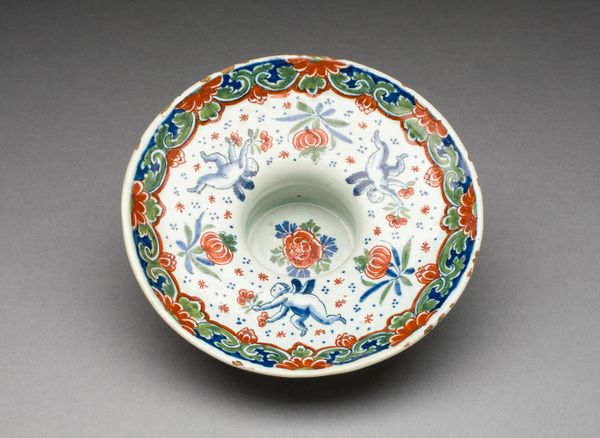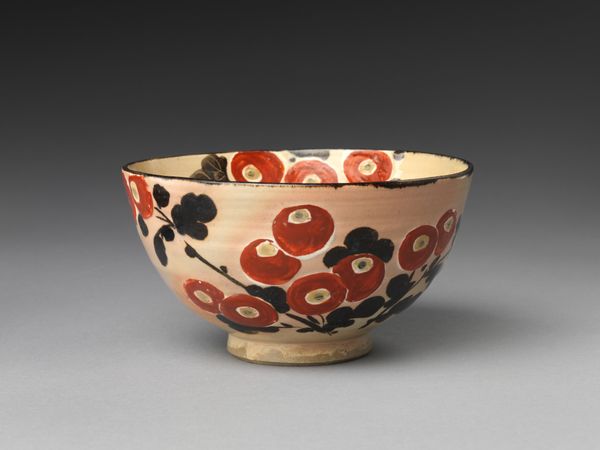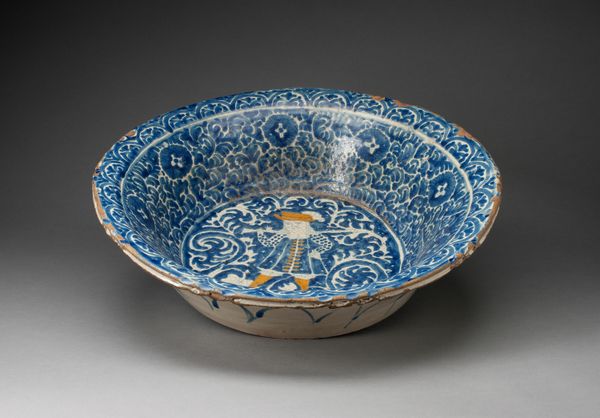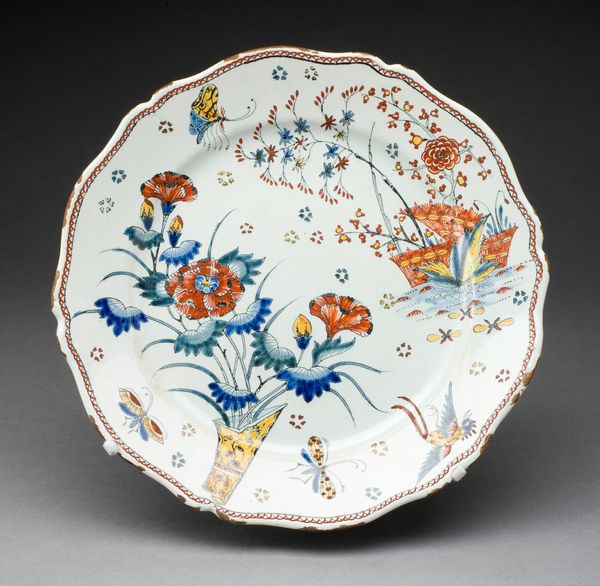
ceramic, porcelain
#
asian-art
#
ceramic
#
porcelain
#
ceramic
#
decorative-art
Dimensions: 24.1 × 10.1 × 23 cm (9 1/2 × 4 × 9 in.)
Copyright: Public Domain
Editor: Here we have a beautiful porcelain dish crafted by the Worcester Royal Porcelain Company between 1765 and 1775. It strikes me with its vibrant colors and meticulously designed floral patterns. What can you tell me about this piece from a historical perspective? Curator: This dish offers a glimpse into the dynamics of global trade and cultural exchange during the 18th century. Worcester Royal Porcelain Company, like many European manufacturers, was heavily influenced by Asian ceramics, particularly those from China and Japan. Notice the Imari-style color palette—the blues, reds, and golds were highly sought after. Editor: It almost seems like they’re trying to imitate Asian art, but with a European flair. Curator: Exactly! This is where things get interesting from a historical standpoint. European companies wanted to capitalize on the popularity of Asian designs but lacked the exact materials and techniques. This led to adaptations and interpretations that speak to European aesthetics and the socio-political context of the time. Consider who would have been purchasing this dish, and where would it have been displayed. What does its display communicate about wealth, status, and taste? Editor: I hadn’t thought about its purpose in someone’s home. It was probably more than just functional; it was a status symbol. Curator: Precisely! This piece highlights the complicated relationship between imitation, innovation, and the construction of social status. It also begs us to question the power dynamics inherent in artistic exchange – who is borrowing from whom, and what does that say about the global hierarchy? Editor: This has completely shifted my perspective! I came in seeing just a pretty dish, but now I understand its complex story and how it reflects larger historical trends. Thank you! Curator: It is often in decorative objects that social aspirations and colonial desires are inadvertently revealed. Considering those undercurrents changes everything, doesn’t it?
Comments
No comments
Be the first to comment and join the conversation on the ultimate creative platform.
